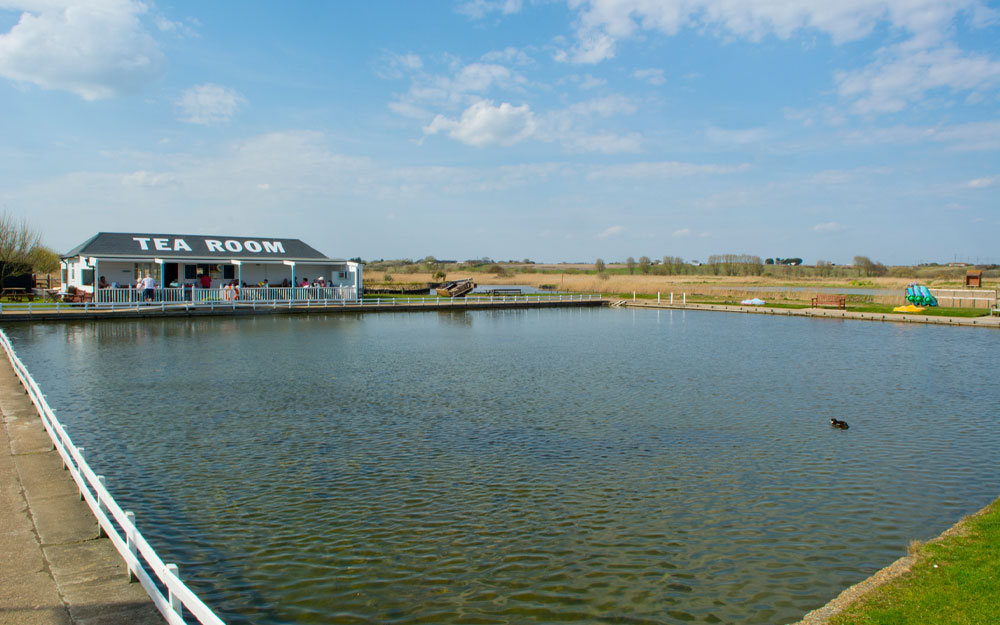The regeneration of the Boating Lake and its 20acre site is one part of a comprehensive project to improve Southwold’s natural environment. In 2019 Southwold Town Council received funding to deliver a feasibility study and options appraisal on the future use(s) and the viability of options for the whole of the boating lake site, whilst aiming to connect the wider Town, Harbour, Marshes & Common Land. The results of the consultations and study by JM Environmental have identified future development and investment options to optimise the site for uses for green tourism, a year-round attraction and development for community use, to maximise its potential as a heritage asset ensuring that each element compliments each other.
The study also takes into consideration how signage could be improved, how interpretation could be developed and options for linking the asset with other attractions and places of interest within Southwold. The study has enabled Southwold Town Council to assess the investment opportunities for this asset so that a full business case can be developed. This could then be used to lever external funding in order to undertake the capital restoration, and regeneration, of the boating lake and the wider area. These include;
• Restore the water area by clearing the silt and reeds, improve the water inlet supply and re-introduce boat hire.
• Install new bird hides around the lake.
• Improve welcome signs and wayfinding signage.
• Introduce interpretation boards throughout the site (historical & ecological).
• Re-landscape frontage of site.
• Improve access and upgrade footpaths.
• Re-model rear of café to improve access.
• Introduce toilet facilities.
• Improve the storage and maintenance area.
• Improve pop up shops, small retail outlets and the tourist Information kiosk.
• Introduce a heritage trail / nature trail, inc. circular walks.
• Construct a new all-purpose education centre.
• Improved management of the Orchid field.
• Construct a new adventure golf complex
Throughout the course of the feasibility study, several more public consultation events took place including at the boating lake site on Saturday 29th June 2019 and at Southwold’s Town Hall on 15th August 2019. From the feasibility study an Expression of Interest application was developed to the National Lottery Heritage Fund (NLHF) for funding in excess of £500k. Unfortunately, due to the COVID-19 of Spring 2020, the NLHF only took COVID-19 emergency funding grants until February 2021. This means there has been an unforeseen 12-month delay in project delivery. The Expression of Interest was submitted in March 2021 and has been accepted for the next stage of consideration which will be submitted over the next few months.
In conjunction with the above, other opportunities are being looked at. These have enabled an application to be submitted for the heritage trail, as an individual project, following another public consultation, drop-in event, at the Pit Stop Café on 10th September, and an online survey, in which 80% of respondents supported the concept of a trail.
In conjunction with the projects described above, the town council/common trust have also been looking at the potential to deliver some actions arising from the Southwold Marshes & Common Management Plan (2019 – 2024) compiled by the Suffolk Wildlife Trust following community and stakeholder consultations. This plan includes proposed projects such as:
• Installation of new sluices and repair existing to enable effective control over water levels on the Town Marsh and Buss Creek Marsh.
• Monitor and seek advice with regard to controlling or containing the Crassula helmsii in Buss Creek marsh.
• Begin 5 year rolling plan of dyke/ditch restoration on Town Marsh and Buss Creek north.
• Improve marsh infrastructure, replace/repair footbridges and gates on public footpath
• Review public footpaths
• Review wetland scrapes
• Create new scrapes in eastern section of Town Marshes.
• Coppice areas of gorse to create 7- 8m fire breaks alongside existing paths.
• Coppice the dying elm in Walters Copse.
• Trim back the Gardner Road hedge to 2m and remove all the tree guards.
• Start programme of rolling bracken to reduce vigour.
• Scrape areas with layers of deep litter to encourage regeneration.
• Open up old sand pit for benefit of sand martins, reptiles and invertebrates.
• Increase area of rough grassland across the Common and encourage/plant areas of scrub (Hawthorn).
• Install nest boxes in suitable areas on the Common.
We know that these are very ambitious projects that will take time to deliver. However, consultations and feedback from stakeholders and the community, in general, mean that we can now prioritise the works being suggested and aim to achieve a few of these over the short term while setting goals for the medium and longer term.
